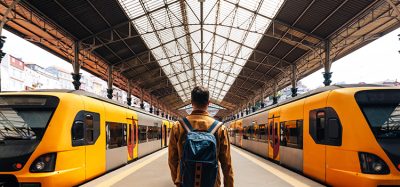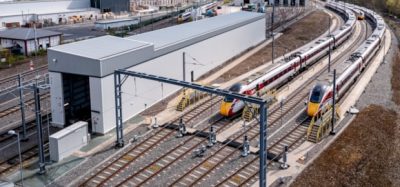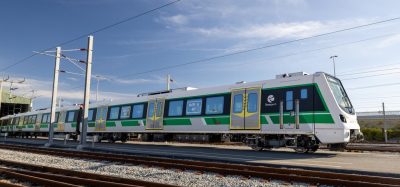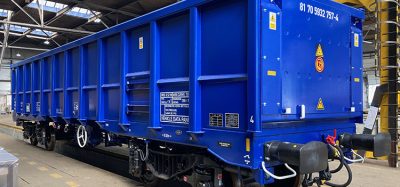New trains for old? Rolling stock maintenance and replacement in the UK
Posted: 6 April 2011 | | No comments yet
Governments, passengers and freight customers have rising expectations and aspirations for the rail system. There is a constant pressure to drive up availability and reliability, and to drive down costs, while assuring and improving safety. At the same time, users want improved service levels, with increasing demands for better information systems, travelling environments and on-board facilities as rail tries to strengthen its competitive position against other modes.
Governments, passengers and freight customers have rising expectations and aspirations for the rail system. There is a constant pressure to drive up availability and reliability, and to drive down costs, while assuring and improving safety. At the same time, users want improved service levels, with increasing demands for better information systems, travelling environments and on-board facilities as rail tries to strengthen its competitive position against other modes.
Governments, passengers and freight customers have rising expectations and aspirations for the rail system. There is a constant pressure to drive up availability and reliability, and to drive down costs, while assuring and improving safety. At the same time, users want improved service levels, with increasing demands for better information systems, travelling environments and on-board facilities as rail tries to strengthen its competitive position against other modes.
Train builders and operators have responded through deployment of a range of technologies. A train is no longer a simple electromechanical system; it incorporates sophisticated communications and control technologies to enable it to perform its transport function. Where fleet replacement is not achievable, significant improvements can still be made to existing rolling stock. Indeed, in the short and medium term, the life extension of existing trains through the use of state-of-the-art traction and auxiliary systems is expected to become a big market.
Impacts on daily maintenance
Product technology, operational and financial performance requirements drive the specification for the people, processes and tools for maintenance. In much the same way that maintaining a modern car is now beyond the capability of the owner tinkering under the bonnet in the street, modern rolling stock needs a whole new approach to maintenance.
The skills profile we need for our maintenance people has changed. To get the best performance from the new generation of assets requires people who are as comfortable with a laptop as they are with hand tools.
As the market calls for earlier first trains in the morning and later last trains at night, we need slicker, more robust but flexible processes to enable the maintenance team to routinely deliver trains back into service in full operational order despite a reduced maintenance window.
To support the new breed of people and the improved processes, we need better tools – not spanners, but intelligent diagnostic and prognostic tools, such as Bombardier’s ORBITA or Alstom’s Traintracer. These take raw data streams from the train, analyse them, referring back to past experience, and give robust decision support information to the team. This could be, for example, a root cause diagnosis for a set of symptoms that are already causing an operational problem, or an early warning that a system or component is nearing failure, allowing the maintainer to exchange that component for a new one and avoid any operational impacts.
Systems can also anticipate any urgent repairs that need to be carried out and automatically put in place the right people, parts and equipment. Live connections to the business’s service order system can ensure that the parts and repair tasks are automatically fed into the system and processed.
This technology means we can actively plan to repair today’s failures tonight, and helps us prevent tomorrow’s failures from happening. Such tools are also an enabler for the maintainer to continuously optimise the maintenance regime, by adopting a condition-based maintenance plan.
Train builders, along with their suppliers, have invested heavily in the people, processes and tools required to successfully support the maintenance of this new generation of rolling stock. One major area of recent activity has been the setting up of the National Skills Academy for Railway Engineering, to bring greater standardisation to training programmes, facilitate transferable qualifications, and target recruitment and training for the actual skills required by the railways and their suppliers. Railway engineering has to be seen again to be a desirable career choice, especially against competition from other sectors, if the railways of the future are to be delivered effectively and efficiently.
Maintenance depots have also been transformed in recent years, with new, clean, high-technology facilities being created appropriate to the level of technology now found on trains. Approaches have varied here according to circumstances, from designing brand new facilities with all the latest equipment, through to relatively low-cost but high-benefit modernisation of older depots. Common threads include the introduction of effective modern management systems, elimination of unproductive activities, and the development of an up-skilled and much greaterinvolved workforce.
The operational front line is also a powerful learning environment, enabling train and equipment suppliers to feed back service experience to the product development programmes for upcoming generations of equipment.
Whether taking a complete ‘one stop shop’ role in managing a fleet, or providing technical support and other services to an operator doing maintenance for itself, the supply community is making a critical contribution to the operation of the railway.
The Railway Industry Association (RIA) has been foremost in encouraging different levels of the supply chain to work closer together. Through activities such as its Value Improvement Programme and active participation in cross-industry initiatives, RIA promotes greater communication and co-operation between the industry parties involved. Suppliers are often the only people that hold the key to solving problems or achieving efficiencies, yet they also need to be aware of exactly what the end customer is looking for if they are to provide the best solution.
Longer term considerations
Rail vehicles have always needed periodic heavy maintenance and, for passenger rolling stock, interior refurbishment, because of the long life of the asset. Today, often through supplier optimisation, much of the heavy maintenance is integrated with the daily maintenance in a balanced exam regime, which drives up train availability for service.
However, the need for interior refurbish – ment remains, and is joined by the need to manage technology obsolescence in a range of systems, now that the lifecycle of the technologies in many systems is much shorter than the life of the train. Sourcing spares and expertise for 10-year old computer systems, for example, needs careful management. Even simple mechanical components can be problematical to replace, with many smaller manufacturers having ceased production.
Refurbishment interventions also give an opportunity for cost-effective modernisation of key systems to improve performance, as well as managing obsolescence risk. In a period of financial constraint, these interventions can also be used to achieve continued service operation beyond the original intended asset life where the business case against asset replacement can be made.
Train modernisation can be a major driver of operational economics, incorporating up-to-date system monitoring and communi – cations technology to enable diagnostic and prognostic-based maintenance.
These projects can be a significant driver of train reliability, maintenance cost reduction and revenue growth for passenger and freight operators, depending on the targeted investments made in key systems. They are a key lever for driving up business competitiveness.
Where operations are franchised, the role of the asset owner is key in working with the current lessor and the supply community to finance the right investment project as part of the overall asset management activity. These targeted investments can enable re-use of the assets and/or cascade to another operation, improving the cost-effectiveness of the rail system as a whole.
In this sphere too, the changes in technology in the product and the operational pressures of the rail system have driven the supply base to invest in people, processes and tools that allow them to deliver major upgrade and refurbishment projects robustly and costeffectively. This is no longer the domain of ‘Fred in a shed’ operations.
On-train information systems will also continue to develop and ‘Wi-Fi’ capability will become the norm, with passengers demanding totally accurate continuous real-time information. The notion of ‘way-finding’ whereby the train, the station and local transport connections become part of one integral transport system will mean that the presentation and communication of on-board information is an expected feature. There is an increasing demand for such technology to be available, whether through equipping existing fleets or replacing them.
However, peaks and troughs in orders for new trains flow through to the heavy maintenance and refurbishment markets, like ripples in a pond. This demand uncertainty and variation brings major challenges for skills retention in the supply sector. It also constrains suppliers’ ability and willingness to invest in better technology, both in terms of workshop plant and in new systems for retrofit to existing trains. RIA and the industry have repeatedly urged Governments to improve the whole-life cost-effectiveness of the rail system by reducing these peaks and troughs. We very much hope that Sir Roy McNulty’s Rail Value for Money Study will come to a similar view.
Recent rolling stock procurement programmes in the UK have been driven by specifications and requirements issued by the Department for Transport. Political considerations and budget reviews have caused significant changes: the DMU replacement project has been cancelled, the decision on the Intercity Express Programme was delayed for months, and the Thameslink fleet programme has slipped. Financial difficulties have also caused the shelving of some major London Underground orders until conditions improve. These unexpected changes, combined with underlying demand volatility, not only drive up cost and waste; they also undermine the credibility of the UK market among supply companies which are very often headquartered in other countries. Both effects make it increasingly difficult for the rolling stock manufacturers, and their supply chain, to retain – still less expand – the production capacity, through skills and equipment, that will be sought when orders are eventually placed.
The DfT process has also been criticised for failing to adequately involve the train operators. However, the policy shift towards longer franchises announced by the new Government should allow and encourage operators to take a greater role in train procurement – perhaps something closer to the procurement processes employed at the start of UK rail privatisation. The potential impact on procurement volumes and their phasing are important issues, and it may be some time before they become clear.
With plans in hand for several mainline electrification schemes, the proportion of electric trains is destined to increase. This is partly driven by the continuing emphasis on environmental issues and energy efficiency. The actual energy usage of trains is also likely to come under greater scrutiny with equipment efficiency techniques, on-board energy measurement and storage capability employed. Regenerative braking can be expected to become common over the whole network, while reductions in train weight and hence energy consumption will become ever more important with the use of new materials and high technology composites being used in carbody construction. These can add further value to the case for new build; conversely diesel trains replaced by electrification can be ‘cascaded’ to replace older vehicles so the need for new diesel trains is reduced.
Conclusions
The various examples mentioned show that significant improvements can be achieved both through refurbishment or modernisation of existing vehicles, or by introducing a new fleet, with purpose-built or substantially-adapted maintenance facilities. Availability of finance can clearly be a driver in deciding which but, to achieve the best result, the key point is that the choice between new-build and refurbishment should be driven by rational commercial assessment of the options on a whole-life cost basis, not by assumptions that one option is automatically better than another.
The demands on passenger and freight rolling stock are higher now than ever. Through investment in people, processes and tools, the supply sector has developed substantial capability to meet these increasing challenges, and has a strong track record in maintenance, refurbishment and upgrade of locomotives and passenger rolling stock. Together with experienced lessors, these suppliers are able to improve the performance of the rail system, while driving down cost. Working with passenger and freight operators around the world, they form a powerful team to keep the railway running.







